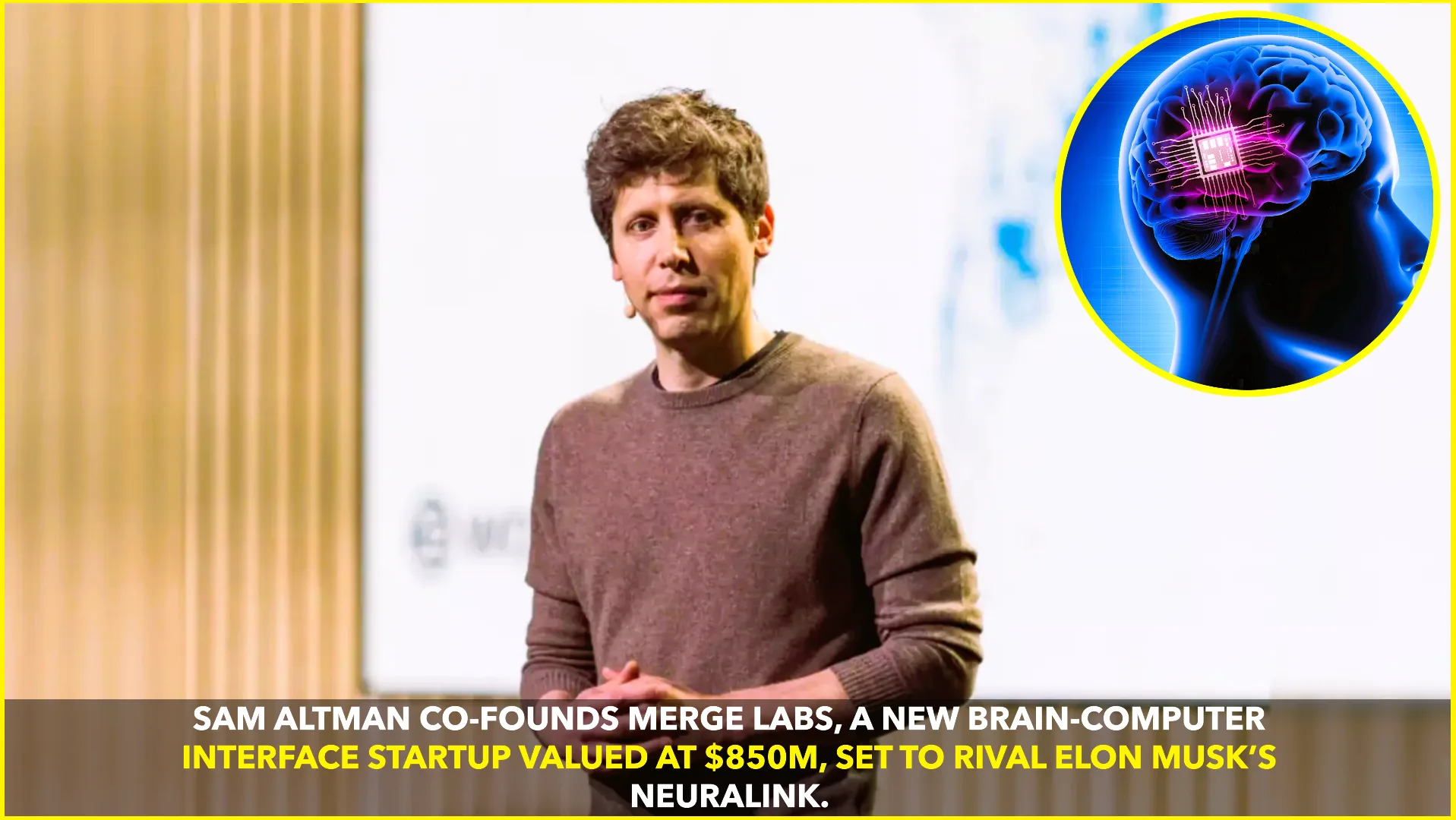Introduction
In a bold new chapter of tech rivalry, Sam Altman — co-founder of OpenAI — is reportedly launching a brain-computer interface startup, Merge Labs, designed to square off against Elon Musk’s Neuralink. Merge Labs, currently valued at around US$850 million, aims to revolutionize how minds interact with machines by combining high-bandwidth interfaces with cutting-edge AI.
A New Frontier in the Altman–Musk Feud
Altman and Musk have a history. Once united under OpenAI, the two tech visionaries drifted apart when Musk exited the board in 2018. Since then, rivalries have flared across AI and social media platforms. Now, the battleground has shifted to the realm of direct neural interfaces.Financial TimesThe Times
Merge Labs: A Different Approach
Merge Labs is co-founded by Altman and Alex Blania, the CEO of Tools for Humanity and co-founder of Worldcoin, his iris-scanning digital ID project. OpenAI’s venture arm is expected to play a major role in an initial $250 million funding round, although terms remain in early discussions. Altman, while lending the co-founder title, is not expected to manage daily operations.
The startup’s stated goal is to create high-bandwidth brain-computer interfaces that are less invasive, more scalable, and AI-enhanced — potentially unlocking broader cognitive integration, not just medical applications like restoring mobility.WccftechThe VergeFinancial Times
Neuralink’s Head Start
By comparison, Musk’s Neuralink has surged ahead. Since its 2016 founding, Neuralink has raised roughly US$650 million, achieving a valuation near US$9 billion, and is conducting human trials. A paralyzed patient has already controlled a computer cursor with thought alone. The company has also secured regulatory clearance to launch trials in the U.K., marking a significant step forward in clinical adoption.The TimesWikipediaFinancial Times
Marketplace and Momentum
The broader brain-computer interface (BCI) sector is witnessing vigorous growth, with projections suggesting it could expand from billions today to over US$12 billion in the coming decade. This promising outlook has made emerging ventures like Merge Labs attractive to investors.
Altman’s vision of “the merge” — a convergence of human cognition and artificial intelligence — isn’t new. In a 2017 blog post, he speculated that humanity would eventually design its own descendants, suggesting an early philosophical basis for this technological leap. This concept regained momentum in recent writings, where he predicted the advent of “high-bandwidth brain-computer interfaces.”The VergeTechCrunchGizmodo
Ethical and Technological Hurdles
BCIs raise substantial ethical, medical, and technical questions. Neuralink’s approach — involving surgical implantation of ultra-thin electrodes via robotics — has drawn scrutiny for its invasiveness and potential long-term health risks. Merge Labs, by contrast, emphasizes less invasive methods. Yet, both companies face hurdles: ensuring safety, long-term reliability, public acceptance, and navigating regulation.WikipediaThe Times
What This Means
Merge Labs signals a new chapter in Altman’s ambition — from pioneering generative AI to exploring humanity’s fusion with intelligent machines. With backing from influential investors and a philosophical edge, Merge Labs could become a formidable counterpart to Neuralink, accelerating the development of mind-machine symbiosis. But achieving practical, safe, and ethical solutions will be the ultimate test.
The Altman–Musk rivalry just entered the neural frontier — and the stakes have never felt higher.










